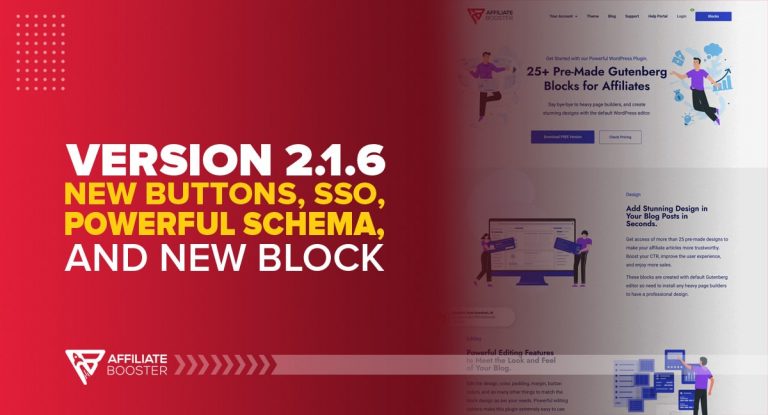Digitization has changed the way we learn and teach, making information easily accessible from anywhere. Online courses cover everything from software development to culinary arts, helping both students learn new skills and teachers reach a global audience.
In this article, we'll explore the key aspects of creating an online course and provide 10 simple steps to create and sell your own. Let’s get started!

Importance of Online Courses
Before we discuss how to create an online course, let’s examine the important aspects that make it stand out as a mode of education.
How To Create An Online Course?
Here are the 10 easy steps to create an online course.
1. Choose A Topic/Subject
Having established the significance of online courses, let’s begin creating an online training course from scratch.

It is important to work on the subject's creativity before starting any task. Here, we need to analyze the subject matter and create our online course.
Choosing a topic is not all that simple. For instance, to start an online course on how to play the guitar, you need to possess the knowledge and create a course accordingly.
Hence, the basis of selecting a topic is analyzing your strengths as a course creator and branching it out into sections. The second core aspect of choosing a topic is understanding how prevalent the topic is in the market.
For instance, if your strength lies in finance or current trends, you should create a course on ‘how to analyze the stock market’ or ‘beginner’s guide to cryptocurrency.’
2. Classify Your Target Audience
Upon selecting your topic, you must classify your target audience. Target audience refers to a section of the masses for whom the product is made.
For instance, if you create a course titled “Beginners' Guide to Video Editing,” it will attract the section of the audience that either knows the basics of video editing or is new to the concept.
This course won’t entice video editors but the people who aspire to be one.
Hence, you need to bifurcate your audience and create content accordingly. If we take the same example as above, you can create your course structure in division three;
You can also merge the content. This will increase the reach and allow you to create in-depth courses.
3. Conduct Research
Once you have selected a topic and your target audience, you need to perform background research on it because you are definitely not the first person to create an online course on it.
Hence, you need to familiarise yourself with the content already available and try to find an alternative to enhance that information through examples or visual media.
Your online course needs to provide upskilling value, such as adding a factor that makes your course structure a better option than the ones present on the internet. To achieve this goal, you need to strengthen your knowledge base.
4. Create An Outline
Now that you have completed the brainstorming section for creating an online course let’s get started with the primary elements. Before we start gathering information and adding content, you must create a structure for your content.

The following steps can help you build an outline for your course;
This is the basic approach to creating an outline for an online course. You can explore and experiment with the steps to make them clearer and easier for the audience to follow.
5. Choose An Online Platform
Once you have the basic outline of what you are going to be sharing information about, you need to select an online course platform.
These platforms help you plan, create, sell, and manage your course content and audience at large.

These online course platforms can offer diversified services, as some offer CRM, CMS, and LMS services, which we will discuss ahead.
Choosing the best alternative as a course creator can be tricky, but the features that you need to focus on are:
Choosing the online platform to publish your course is a pivotal decision for an edupreneur and course creator. You can select your platform from a wide range of online course builders, such as Kajabi, Podia, Teachable, and even WordPress. In addition to these, you have Learning Management Systems (LMS) like EdApp and Schoology.
Hence, we would like for you to get a better idea of how to create an online course with our in-depth analysis of the 10 Best Online Course Platforms.
6. Plan Out Your Modules and Lectures
After creating an outline for your course, you can start focusing on the content you will provide for your audience.
Modules and lectures are the primary divisions of a course, wherein a module is a collection of lectures.
For instance, if you are creating a course on how to write a novel, your first module will be ‘Select/Pick A Genre,’ and in that module, you will have chapters like ‘Types Of Genres’ and then describe and give examples for each of the genres. Then move on to the next module, ‘Creating A Setting,’ wherein you can add chapters like ‘Mood of the Story’ and others.
Here, you need to plan each lecture to its core. With online course-building software, you can create lectures with various multimedia where the audience is more engaged with the content.
For instance, you can shuffle between video lectures and textual content. You can also add course materials to your lectures.
Course Materials are attachments to your lectures that can be used as practice material for skills or as reference content. These documents help students better understand the course subject.
Course materials can be attached as worksheets and workbooks, PDFs, questionnaires and guidelines, instructor guides, charts, presentations, and other textual information.
You can use tools like Dynalist to create the content outline for your course.
A lot of platforms also provide live streaming to connect with your audience more seamlessly and engagingly.
This is how you can plan out your modules and lectures for your course.
7. Host Your Online Course
Upon completing all the above steps, you will have a well-structured course with you. You can now host this course on online platforms for the students to observe and join.
For this, you will need a domain to host your course.

A domain is like an online address that can be used to locate a website or a digital space on the internet. Domains can be created for sales pages, websites, online courses, and others that are somewhere down the line interlinked.
Your online course will be hosted on your site/domain. However, online platforms also offer the option of hosting under their name or a marketplace.
Therefore, the three ways of hosting your online course on the internet are;
Many online course platforms offer free hosting and assistance in creating an online course. To understand the concept of free web hosting in detail, check out our Thinkific review.
8. Create Your Online School
Once you have hosted your first course in the marketplace, you would want to expand your radius and create more courses for your mentees, as there are new developments every day.
To achieve the goal of creating a library of courses, you need to create a digital space. This space will be an archive of information for anyone discovering your course for the first time and who wants to know more about your brand. The best way to manage content is by creating a website.

Websites offer a platform to sell and manage content. In terms of an online course, your website will be your online school where you can admit a number of students and allow them to take their desired courses.
You can also factor in these steps for the quest on how to create an online course with WordPress and then integrate/plugin the course with your website.
A website alone won’t suffice as a complete package for creating an online school, and hence, you need the assistance of services like;
The above features enhance the efficiency of online course creators as they can manage their content in one place.
Creating an online course is the first step. Once you do, you have to organize your students, content, and affiliates (if any) and sell and monetize your course. An online school requires detailed attention to all the aspects of creating, selling, and managing an online course.
All this requires external tools, but there are online course builders that provide an all-in-one platform for creators to create a streamlined work system. Our Podia Review provides further information about a unified online course platform.
9. Monetise Your Course
The creation of a product indirectly implies expectations of profitable returns. Anyone who is creating an online course will want their students to pay a certain amount or subscribe to their sessions in exchange for an online course. This is referred to as monetizing your product.
There are various ways to monetize your online course, and we will provide an overview of them all for you to choose from. Following are a few ways to monetize your course upon learning how to create an online course;

Create a list of potential customers through advertising and post-clicks and then cross-sell the course based on their interests.
You can sell your courses on market platforms such as Skillshare, Udemy, Shaw Academy, and others. However, there are restrictions on creating a brand, and you need to share a proportion of your profits.
You can create a group or bundle of similar or interrelated courses and sell them at an optimum price to attract the attention of a potential consumer.
This strategy is used by MyCaptain, which provides course bundles of 5-6 interlinked courses titled ‘Writer’s Choice’ or ‘Business Skills’.
The best way to allure the consumers is to give them a reward that they can add as an achievement.
Certification courses are created just like regular courses, but they provide a certificate of completion at the end, which can be eye-catching for students.'
You can monetize your online course by providing membership-based content. Memberships are like subscriptions, where you pay for premium content such as expert advice, guidelines, and final projects.
These can also be great ways to build a community of students. To understand and explore the membership site concept, refer to our article on the 10 Best Membership Site Platforms.
10. Marketing Your Course
The final step in creating an online course is selling it and attracting customers. Marketing your course can be tricky as there are many competitors in the market, which can lead to distractions for consumers.

We will guide you through the different methods of marketing and promoting your online courses without having to learn complex algorithms or spend large amounts on promotions.
Following are some of the ways to promote your course;
You can promote and add links to your course on your social media handles, podcasts, and YouTube channels. This will engage your existing subscribers and attract new ones.
It goes without saying that anything offered for free will attract attention, and as a course creator, you can use this to your advantage. Create short courses or mini-courses and sell them for free on marketplaces like Skillshare and Udemy to attract organic traffic.
Just like free items, products that are at discounts are also highly desirable to the public. Hence, you can offer discounted rates for course bundles or individual courses on festivals and other prominent occasions.
You can optimize Facebook and Google Ads to promote your courses on social media intervals and YouTube ads at the start of the videos. The rates may differ.
You can build communities on Facebook, Discord, Spotify Podcast, and Twitch to market and promote your brand's digital products, such as online courses, memberships, and course materials.
In addition to these, you can also check out our Kartra Review, where we discuss marketing and sales solutions and automation for digital products like online courses and memberships.
With that, we conclude our 10-step process for creating an online course. You can now plan, create, and sell your course on the Internet and spread your knowledge and expertise around the globe!
Conclusion: How to Create an Online Course?
Creating an online course can be incredibly rewarding, especially if it becomes a valuable and transformative resource for your audience. If you have knowledge and experience to share, there’s no better time to start.
These 10 steps will guide you through the process of building, promoting, and selling your course—now it’s your turn to dive in and make an impact!







